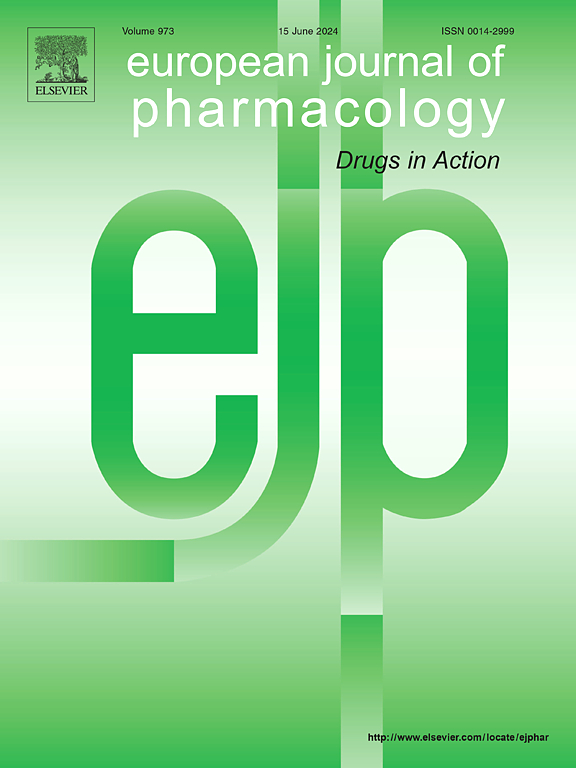Low-dose treatment with Epirubicin, a novel histone deacetylase 1 inhibitor, exerts anti-leukemic effects by inducing ferroptosis
IF 4.2
3区 医学
Q1 PHARMACOLOGY & PHARMACY
引用次数: 0
Abstract
Aims
Leukemia is hematopoietic stem cell malignant tumor with poor outcomes. Histone deacetylase 1 (HDAC1) is highly expressed in leukemia and current HDAC1 inhibitors have clinical limitations in leukemia therapy. Therefore, novel HDAC1 inhibitor is imperative to being found and its mechanism needs to be further explored.
Materials and methods
Novel HDAC1 inhibitors were discovered through drug virtual screening. CCK-8, EdU and soft agar assay were used to assess the anti-leukemic effect of the candidate HDAC1 inhibitor. ROS, lipid peroxidation, intracellular Fe2+ and LIP assay were employed to verify cell ferroptosis. Additionally, a xenograft model was performed to explore the efficacy and safety of the candidate HDAC1 inhibitor in vivo.
Results
HDAC1 might be a promising therapeutic target for leukemia and Epirubicin (Epi) could be used as a potential HDAC1 inhibitor. Low-dose Epi exhibited good anti-leukemic effects by inhibiting cell proliferation, DNA synthesis and colony formation. Low-dose Epi could induce ferroptosis by triggering lipid peroxidation, which was better than that treated with current HDAC1 inhibitors Chidamide or Vorinostat, ROS generation and Fe2+ overload in leukemia cells. Mechanistically, low-dose Epi induced ferroptosis by targeting amino acid metabolism and iron metabolism. Similar results were found in a xenograft model in NOG mice with a good safety profile.
Conclusion
Our study demonstrated that Epi might be used as a HDAC1 inhibitor. Low-dose Epi could inhibit tumor progression by inducing cell ferroptosis in vitro and in vivo. Thus, Epi administration with lower concentration may be much more favorable and safer in the treatment with leukemia.
新型组蛋白去乙酰化酶 1 抑制剂表柔比星的低剂量治疗可通过诱导铁变态反应发挥抗白血病作用
目的:白血病是一种预后不良的造血干细胞恶性肿瘤。组蛋白去乙酰化酶 1(HDAC1)在白血病中高度表达,目前的 HDAC1 抑制剂在白血病治疗中存在临床局限性。因此,寻找新型 HDAC1 抑制剂势在必行,其作用机制也有待进一步探索:通过药物虚拟筛选发现新型 HDAC1 抑制剂。采用 CCK-8、EdU 和软琼脂试验评估候选 HDAC1 抑制剂的抗白血病效果。ROS、脂质过氧化反应、细胞内 Fe2+ 和 LIP 检测被用来验证细胞的铁变态反应。此外,还通过异种移植模型探讨候选 HDAC1 抑制剂在体内的有效性和安全性:结果:HDAC1可能是白血病的治疗靶点,表柔比星(Epi)可作为潜在的HDAC1抑制剂。小剂量 Epi 通过抑制细胞增殖、DNA 合成和集落形成,表现出良好的抗白血病作用。小剂量Epi能通过引发脂质过氧化诱导铁变态反应,其效果优于目前的HDAC1抑制剂奇达姆或伏立诺他,并能抑制白血病细胞ROS生成和Fe2+过载。从机理上讲,低剂量 Epi 通过靶向氨基酸代谢和铁代谢诱导铁变态反应。在NOG小鼠的异种移植模型中也发现了类似的结果,而且安全性良好:我们的研究表明,Epi可用作HDAC1抑制剂。结论:我们的研究表明,Epi可作为一种HDAC1抑制剂,低剂量Epi可通过诱导体外和体内的细胞铁变态反应抑制肿瘤进展。因此,低浓度 Epi 对白血病的治疗更为有利和安全。
本文章由计算机程序翻译,如有差异,请以英文原文为准。
求助全文
约1分钟内获得全文
求助全文
来源期刊
CiteScore
9.00
自引率
0.00%
发文量
572
审稿时长
34 days
期刊介绍:
The European Journal of Pharmacology publishes research papers covering all aspects of experimental pharmacology with focus on the mechanism of action of structurally identified compounds affecting biological systems.
The scope includes:
Behavioural pharmacology
Neuropharmacology and analgesia
Cardiovascular pharmacology
Pulmonary, gastrointestinal and urogenital pharmacology
Endocrine pharmacology
Immunopharmacology and inflammation
Molecular and cellular pharmacology
Regenerative pharmacology
Biologicals and biotherapeutics
Translational pharmacology
Nutriceutical pharmacology.

 求助内容:
求助内容: 应助结果提醒方式:
应助结果提醒方式:


